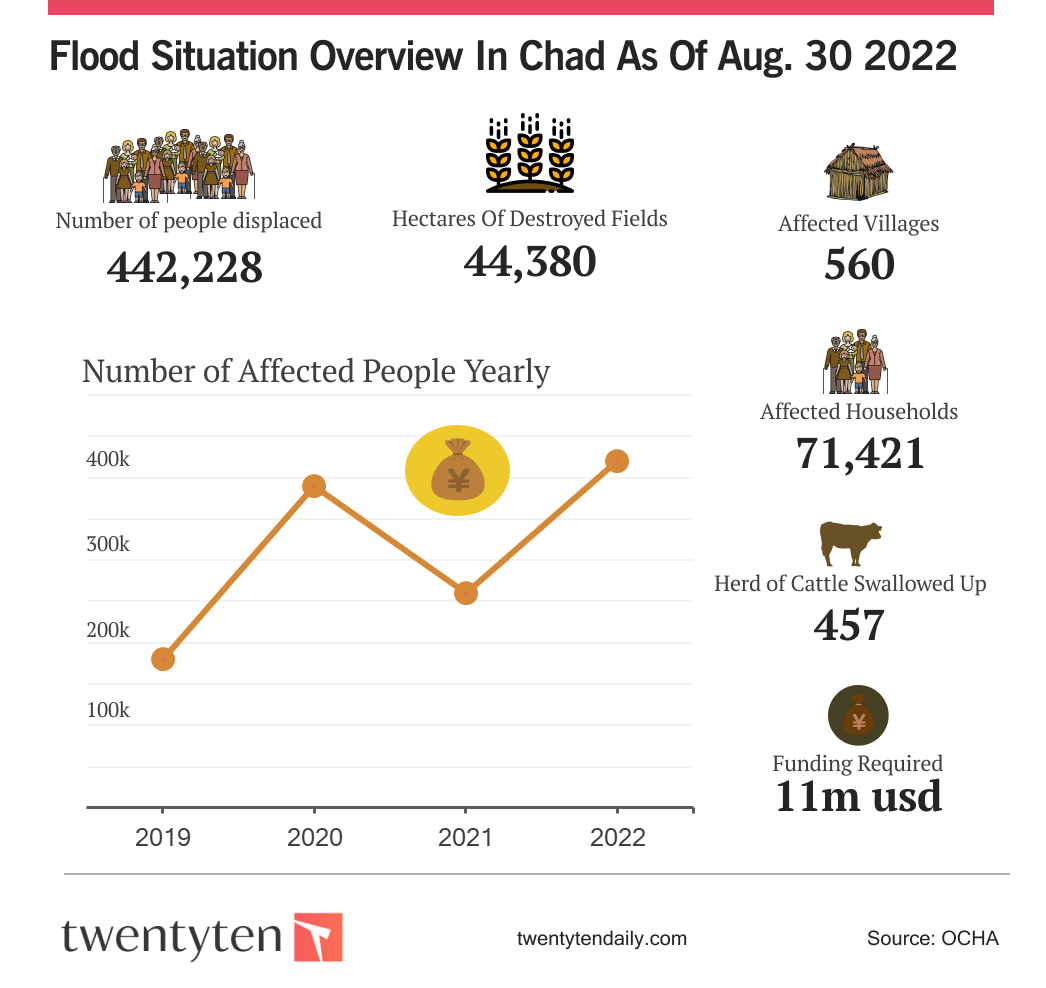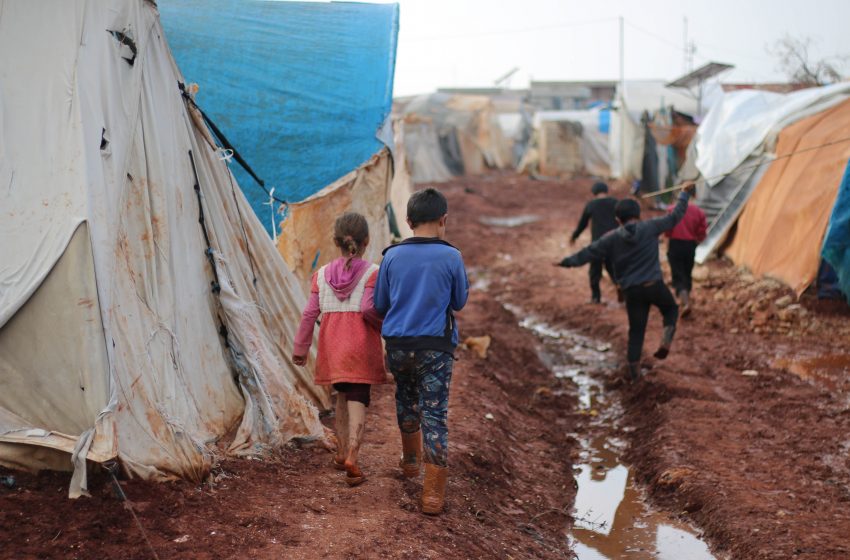Since the start of the rainy season, above-normal rainfall has left vast areas of Chad submerged under water. Aid groups and the state’s weather agency have revealed that many people have been forced out of their homes as parts of the country are now only accessible through boats.
In N’Djamena, the country’s capital, families have piled into wooden boats to cross streets that have been awash with fetid flood water since the end of July.
More than 442,000 people in Chad had been affected by the floods as of the end of August, the latest figures from the UN humanitarian office (OCHA) show.
“The country has not recorded such a quantity of rainwater since 1990,” Idriss Abdallah Hassan, a senior official at the state weather agency told Reuters.
In N’Djamena, some residents have sought refuge on the grounds of a local school, pitching makeshift shelters out of sticks and bits of cloth, while others have moved further off to live with relatives in other parts of the country.
As of 30 July, OCHA reported that about 13 villages located in the sous-préfectures of Leré and Guegou (département of Lac Léré, province of Mayo-Kebbi Ouest) had been submerged in water.
About 384 households (2,112 individuals) were affected by the flooding. Among these households, the homes of 112 households were destroyed, while the homes of the remaining affected households (272 households) suffered partial damage.

With a subsequent rise in the Bahr Azoum River’s water level on the night of 30 July 2022, a total of 975 households (4,830 individuals) were affected by floods in two localities located in Koukou Andarana (département of Koukou Andarana, province of Sila). Among these households, the homes of 390 households (1,905 individuals), residing in the locality of Koukou centre, were destroyed while houses of 585 other households (2,925 individuals), residing in the locality of Habilé, were partially damaged.
Chad’s economy has also suffered severely from the flood. For instance, the primary economic source in the country’s capital, N’Djamena, is agricultural work. About 80% of the population within N’Djamena works within farming-based industries, including the cultivation of crops and growing livestock. But the floods have hampered farming, worsening food insecurity and threatening the livelihood of people in the affected area.
According to the report by OCHA, nearly 2,700 hectares of crops and farming land were destroyed by swollen rivers in most parts of Chad.
The government has set up an emergency crisis committee to help flood-affected people with food, blankets and health kits but the government is still soliciting for more aid to help reach more people affected.
So far, about 33 per cent of the humanitarian funding required for Chad in 2022 has been received by humanitarian actors on the ground. In a joint flash appeal, the Government of Chad and the humanitarian community are calling for USD 5.2 million to provide shelter, necessities, and protection to those affected by the floods.

